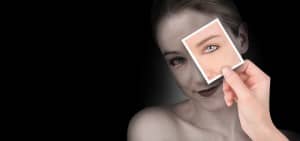
While common, there is no one-size-fits-all solution to this vexing problem. Variables may include patient preferences regarding downtime and cost, physician experience and background, as well as the extent of the problem.
Ask a handful of doctors how they treat undereye bags, and you will get handful of answers—and that’s exactly what we did.
Here’s what some thought leaders had to tell us about how they reduce the appearance of undereye bags and deep tear troughs.
How do you do it?
“Options run the gamut from noninvasive to surgical and can be customized based on the degree of the problem. On the noninvasive end, Neotensil is a topical, breathable shapewear that compresses undereye bags. The benefits are evident within 1 to 3 hours, but not permanent. Fillers such as Restylane or Restylane Silk can help camouflage deep tear troughs. If only excess fat or puffiness is the issue, I will do a transconjunctival blepharoplasty. If there is a little skin laxity and some fat, I remove some fat through the lower eyelid and then resurface the eyelid with trichloracetic acid peel or CO2 laser. If they have more extensive bags, a deep tear trough, and skin laxity, I do a transcutaneous blepharoplasty and then either fat repositioning or grafting with an orbicularis muscle suspension sling.”
Facial plastic surgeon
Main Line Center for Laser Surgery
Ardmore, Pa
“The majority of times, the cause for discoloration is genetic and due to the viability of the blood vessels below the skin. A combination approach is always needed to get the best results in this area, and this includes topical skin care, laser and/or radiofrequency treatments, and fillers if placed appropriately. All my patients are on topical lightening agents, typically a vitamin C serum product such as AOX+ eye gel in the morning, a brightening agent like Lytera, and/or a vitamin A-based product such as Jan Marini Age Intervention Retinol Plus in the evening.
“Sun protection is essential. I love SkinCeuticals Physical UV Eye Defense SPF 50. Resurfacing and tightening also play an important role. My patients get offered a menu of options, for which a combination gives the best results. Light salicylic acid peels help give textural and pigment improvement; nonablative lasers can be used to tighten and improve fine lines/wrinkles and crepey skin; fractional radiofrequency devices are cutting edge and improve texture, tone, and wrinkles with very little downtime; radiofrequency with pulsed electromagnetic fields are amazing for puffiness and bags, in patients who do not want eyelid surgery; appropriately placed fillers can replace lost volume and cover up the vessels and fat pads below, improving the appearance.
“Microsecond Nd:YAG laser treatments have produced dramatic improvement in discoloration in some of my patients and is safe in dark skin types, similar to the radiofrequency devices. For lifting, ablative laser resurfacing such as CO2 laser combined with monopolar radiofrequency deep heating give amazing results. In some cases, those who smile and have crepey skin or undereye wrinkles, a small amount of neurotoxin (Botox, Dysport, Xeomin) strategically placed in the lower eyelid skin can improve wrinkles dramatically and give the eye a more ‘open’ appearance.
Dermatologist
Spalding Drive Plastic Surgery
Beverly Hills, Calif
“I came up with my approach when I was fixing a zygoma and orbital fracture one day through the upper buccal sulcus approach and the orbital septum was torn. It was sort of an ‘A-ha’ moment, where I could see the lower eyelid fat more easily that I’ve ever seen it before. I was able to see that it could be easily redraped over the orbital rim and do a mid facelift at the same time. Really, it’s the perfect operation for negative vector patients.
“I like fillers in most cases where I’m simply adding a little volume to the tear trough, especially Belotero Balance. It’s forgiving and doesn’t give you much of a Tyndall effect even when injected superficially. When the midface is well projected and the lower eyelid fat pockets need to be reduced, I do either a transconjunctival or skin muscle flap approach. If the patient needs lower eyelid fat redraping, my vast preference is actually to go through the mouth. Who would have ever thought that you could do lower eyelid surgery through the mouth and that it was actually the most effective way to redrape fat over the orbital rim?”
Plastic surgeon
Mofid Plastic Surgery
La Jolla, Calif
“Treating the ‘under-eyelid bags’ can be challenging and is often overlooked, even by seasoned practitioners. Tear trough fillers have certainly added a new trick in the treatment bag. I personally feel that the most important thing is to consider the lower lid as part of the upper cheek and the upper cheek part of the lower lid. In other words, the lid and cheek are really a single unit in the youthful face. I have just submitted an article for publication called “Forget the Tear Trough and Treat the Cheek Trough.” My best results in this area occur when I perform lower lid [sidebar float=”right” width=”250″]
Related ?Resources
Neotensil®
Restylane®
AOX+ Eye Gel, Lytera® , SkinCeuticals Physical ?Eye UV Defense SPF 50
Jan Marini Age Intervention® Retinol Plus
Botox® Cosmetic
Dysport®
Xeomin®
Belotero Balance®
Juvéderm Voluma® XC
Radiesse®
Fraxel® Dual
NeoStrata
Neocutis
Caudalie Premier Cru ?The Eye Cream
www.us.caudalie.com/?premier-cru-the-eye-cream-1.html
EltaMD UV Clear ?Broad-Spectrum SPF 46
www.eltamd.com/product/uv-clear-broad-spectrum-spf-46
SkinMedica
Colorescience ?Sunforgettable®
www.colorescience.com[/sidebar]
transconjunctival blepharoplasty with CO2 laser skin resurfacing on the lower lid skin in conjunction with silicone cheek implants or fillers. This combination addresses the lower lid, the lower lid skin, and the cheek.”
Cosmetic facial surgeon
Midlothian, Va
“For the tear trough, I usually remove fat via a transconjunctival blepharoplasty with the CO2 laser and perform laser resurfacing at the same time. I like this technique because it tends not to change the shape of the eye. At the 1-month postop, I often suggest a Hyaluronic acid-based filler—often Restylane or Belotero—in the tear trough along the orbitomalar ligament to help create a smooth contour from the eyelids into the malaria eminence. The patient may also desire filler in the malar area. I rarely have an unhappy patient with this approach. Alternatively, if the patient has a very hollow tear trough and a thick cheek/malar eminence, I will suggest a fat transposition of the medial and central fat pads over the info-orbital rim. If the patient has lower lid laxity, a tarsal strip can then be performed to improve the position of the lower lid margin. This is often needed in patients with sleep apnea and floppy lid syndrome.”
Chief, oculofacial surgery
Duke University Medical Center
Durham, NC
“Two decades ago, I would have referred these patients out to my surgical colleagues for a lower lid blepharoplasty. However, advances in our understanding of the anatomic changes of aging and in the products and procedures available have allowed for safe, effective noninvasive alternatives.
“The first step is a visual and tactile evaluation of the area. Look at skin tone, texture, and color. Do a snap test to determine laxity. Palpate the orbital rim and feel for deficits in underlying fat volume of the mid and lateral face. Most of these patients have significantly more loss of the deep medial fat pad than of the surrounding and more superficial fat. That loss creates a disharmony between the lower lid fat pad and the remaining fat of the mid cheek. Loss of volume in the temple and lateral face similarly cause a ptosis of the skin medially.
“Replenishing the volume using an appropriate filling agent or agents returns the surface contour. Unless the patient is young with adequate support laterally, I start my injections at the zygoma and move medially. Lifting first from the lateral cheek reduces the amount of filler needed high and medial. My initial injections are generally supraperiosteal using a needle. Good ‘lifters’ like Juvéderm Voluma, Radiesse, and Perlane can all be used.
“As I move medially, I sometimes switch to a cannula and prefer using a Hyaluronic acid. I will often layer deeper injections with one of the above with a product more suitable for superficial intradermal injections like Belotero. It is important not to overinject the tear troughs medially to avoid a Tyndall effect. Patients need to understand that if the skin quality is not good and/or there is excessive skin laxity, filling alone is not the answer. Once I have replaced the needed volume, I recommend a series of nonablative resurfacing treatments like the Fraxel Dual. The eyelid skin responds quickly to both the 1,927-nm and 1,550-nm wavelengths. Patients will often see reduction of the ‘crepey’ texture of the lower lid with tightening even after one treatment.
“I reserve periocular botulinum toxin injections until the skin quality and volume are better. Any patient with a poor snap test risks ectropion and worsening of the ‘puffiness’ with lower lid toxin. Finally, every patient needs a topical maintenance regimen. I show patients that even applying a good moisturizer under one eye makes it look better than the other. Products containing polyhydroxy acids like those from NeoStrata may be more tolerable to sensitive eyelid skin than retinoids, particularly in the winter months. Neocutis makes a very well-tolerated eye cream containing growth factors for collagen stimulation as well as caffeine to temporarily ‘de-puff’ the area.
“My patients also do well with several eye products from Caudalie containing polyphenols and resveratrol, particularly its Premier Cru Eye. Sun protection is, of course, critical. Daily use of a sunscreen moisturizer like Elta MD UV Clear, Neocutis Journee, or Skin Medica daily sunscreen is a necessity. However, patients often complain that their eyes get irritated when they attempt to reapply. I recommend Colorescience Sunforgettable mineral powder sunscreen in an easy-to-carry, refillable brush, or Headhunter war paint’s waxy formula in a small tin for that sensitive area.”
Associate clinical professor of dermatology
Icahn School of Medicine of Mount Sinai
New York City








